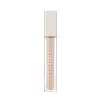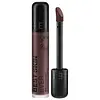Wakemake Defining Cover Concealer SPF 30 PA++ Versus Sephora Collection Best Skin Ever Multi-Use Concealer
What's inside
What's inside
 Key Ingredients
Key Ingredients

 Benefits
Benefits

 Concerns
Concerns

 Ingredients Side-by-side
Ingredients Side-by-side

Water
Skin ConditioningTitanium Dioxide
Cosmetic ColorantCyclopentasiloxane
EmollientPhenyl Trimethicone
Skin ConditioningButylene Glycol
HumectantCetyl PEG/PPG-10/1 Dimethicone
EmulsifyingCI 77492
Cosmetic ColorantBoron Nitride
AbsorbentTrimethylsiloxysilicate
EmollientPEG-10 Dimethicone
Skin ConditioningVinyl Dimethicone/Methicone Silsesquioxane Crosspolymer
Sodium Chloride
Masking1,2-Hexanediol
Skin ConditioningAluminum Hydroxide
EmollientTriethoxycaprylylsilane
CI 77491
Cosmetic ColorantDisteardimonium Hectorite
StabilisingQuaternium-18 Bentonite
Caprylyl Glycol
EmollientCI 77499
Cosmetic ColorantTocopheryl Acetate
AntioxidantMelaleuca Alternifolia Leaf Extract
PerfumingWater, Titanium Dioxide, Cyclopentasiloxane, Phenyl Trimethicone, Butylene Glycol, Cetyl PEG/PPG-10/1 Dimethicone, CI 77492, Boron Nitride, Trimethylsiloxysilicate, PEG-10 Dimethicone, Vinyl Dimethicone/Methicone Silsesquioxane Crosspolymer, Sodium Chloride, 1,2-Hexanediol, Aluminum Hydroxide, Triethoxycaprylylsilane, CI 77491, Disteardimonium Hectorite, Quaternium-18 Bentonite, Caprylyl Glycol, CI 77499, Tocopheryl Acetate, Melaleuca Alternifolia Leaf Extract
Water
Skin ConditioningDimethicone
EmollientCI 77499
Cosmetic ColorantCI 77491
Cosmetic ColorantCI 77492
Cosmetic ColorantPropylene Glycol Dicaprylate/Dicaprate
EmollientGlycerin
HumectantIsododecane
EmollientLauryl Polyglyceryl-3 Polydimethylsiloxyethyl Dimethicone
Skin ConditioningPropanediol
SolventDimethicone/Vinyl Dimethicone Crosspolymer
Skin ConditioningPentylene Glycol
Skin ConditioningButylene Glycol
HumectantPaeonia Lactiflora Root Water
MaskingSodium Chloride
MaskingDimethicone/Polyglycerin-3 Crosspolymer
CleansingStearalkonium Hectorite
Gel FormingPhenoxyethanol
PreservativeTocopheryl Acetate
AntioxidantTriethoxysilylethyl Polydimethylsiloxyethyl Hexyl Dimethicone
Skin ConditioningCaesalpinia Spinosa Fruit Extract
Skin ProtectingPropylene Carbonate
SolventAspergillus Ferment
Skin ConditioningPanax Ginseng Extract
AntioxidantSodium Hyaluronate
HumectantKappaphycus Alvarezii Extract
Skin ConditioningDipropylene Glycol
HumectantSodium Citrate
BufferingTocopherol
AntioxidantWater, Dimethicone, CI 77499, CI 77491, CI 77492, Propylene Glycol Dicaprylate/Dicaprate, Glycerin, Isododecane, Lauryl Polyglyceryl-3 Polydimethylsiloxyethyl Dimethicone, Propanediol, Dimethicone/Vinyl Dimethicone Crosspolymer, Pentylene Glycol, Butylene Glycol, Paeonia Lactiflora Root Water, Sodium Chloride, Dimethicone/Polyglycerin-3 Crosspolymer, Stearalkonium Hectorite, Phenoxyethanol, Tocopheryl Acetate, Triethoxysilylethyl Polydimethylsiloxyethyl Hexyl Dimethicone, Caesalpinia Spinosa Fruit Extract, Propylene Carbonate, Aspergillus Ferment, Panax Ginseng Extract, Sodium Hyaluronate, Kappaphycus Alvarezii Extract, Dipropylene Glycol, Sodium Citrate, Tocopherol
 Reviews
Reviews

Ingredients Explained
These ingredients are found in both products.
Ingredients higher up in an ingredient list are typically present in a larger amount.
Butylene Glycol (or BG) is used within cosmetic products for a few different reasons:
Overall, Butylene Glycol is a safe and well-rounded ingredient that works well with other ingredients.
Though this ingredient works well with most skin types, some people with sensitive skin may experience a reaction such as allergic rashes, closed comedones, or itchiness.
Learn more about Butylene GlycolCi 77491 is also hydrated iron III oxide. It's sole purpose is to give a red/pink hue to products.
Iron III oxides are classified as inorganic chemicals for coloring.
Synthetically created Ci 77491 is considered safer than those naturally found. This is because the synthetically created version may contain less impurities. Iron oxides are generally non-toxic and non-allergenic.
Learn more about CI 77491Ci 77492 is also hydrated iron III oxide. It's sole purpose is to give a yellow hue to products.
Iron III oxides are classified as inorganic chemicals for coloring.
Synthetically created Ci 77492 is considered safer than those naturally found. This is because the synthetically created version may contain less impurities. Iron oxides are generally non-toxic and non-allergenic.
Learn more about CI 77492Ci 77499 is also hydrated iron III oxide. It is created from mixing red and black iron oxides. This helps give shades of darkness to a product.
Iron III oxides are classified as inorganic chemicals for coloring.
Chances are, you eat sodium chloride every day. Sodium Chloride is also known as table salt.
This ingredient has many purposes in skincare: thickener, emulsifier, and exfoliator.
You'll most likely find this ingredient in cleansers where it is used to create a gel-like texture. As an emulsifier, it also prevents ingredients from separating.
There is much debate on whether this ingredient is comedogenic. The short answer - comedogenic ratings don't tell the whole story. Learn more about comegodenic ratings here.
The concensus about this ingredient causing acne seems to be divided. Research is needed to understand if this ingredient does cause acne.
Scrubs may use salt as the primary exfoliating ingredient.
Learn more about Sodium ChlorideTocopheryl Acetate is AKA Vitamin E. It is an antioxidant and protects your skin from free radicals. Free radicals damage the skin by breaking down collagen.
One study found using Tocopheryl Acetate with Vitamin C decreased the number of sunburned cells.
Tocopheryl Acetate is commonly found in both skincare and dietary supplements.
Learn more about Tocopheryl AcetateWater. It's the most common cosmetic ingredient of all. You'll usually see it at the top of ingredient lists, meaning that it makes up the largest part of the product.
So why is it so popular? Water most often acts as a solvent - this means that it helps dissolve other ingredients into the formulation.
You'll also recognize water as that liquid we all need to stay alive. If you see this, drink a glass of water. Stay hydrated!
Learn more about Water